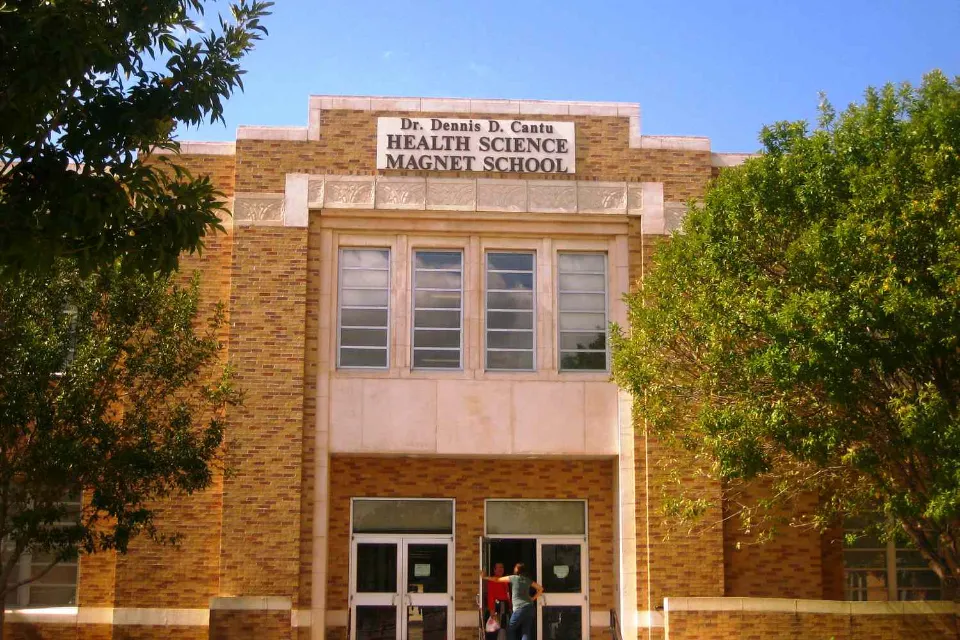
What Are Magnet Schools? An Ultimate Explanation
Here, we explain what are magnet schools and their benefits. After reading this post, you can have a better understanding of magnet schools.
Magnet schools are free public elementary and secondary “schools of choice” that operate within existing public schools in a district—unlike private and charter schools, which are completely separate institutions. Magnet schools focus on specific areas of interest, such as performing arts, world languages, and leadership, as well as science, technology, engineering, and math (STEM or STEAM for short) programs.
Here’s everything you need to know.
What Are Magnet Schools?
The single largest form of public school “choice,” magnet schools are visionary, innovative, and open to all students regardless of zip code. Each of the 4,340 schools, which together educate more than 3.5 million students nationwide, focuses on individually themed curricula.
The educational themes that some magnet schools focus on include:
- Science, Technology, Engineering, and Mathematics (STEM)
- Fine and Performing Arts
- International Baccalaureate, International Studies
- Career and Technical Education (CTE) and
- World Languages (immersion and non-immersion)

Magnet schools draw students from a range of socioeconomic and racial backgrounds as well as academic achievement levels. Due to the high demand, most schools use a lottery system to decide which students get accepted; they are free and open to everyone. Magnet schools are held responsible for meeting and frequently exceeding state standards.
Magnet schools are a dynamic environment for raising positive citizens who are prepared for successful community engagement and future careers thanks to the soft skills of teamwork, acceptance, innovation, and engagement.
Students who participate in this practical training interact with peers from various backgrounds and gain practical work experience with businesses, cultural institutions, universities, and community organizations.
History of Magnet Schools
Though the idea of magnet schools may seem novel to some, it has roots in the 1970s, when it first gained popularity as a means of racial desegregation in public schools and to promote diversity in the classroom.* The goal was to unite students from various backgrounds and neighborhoods who were talented in certain fields, like science or the performing arts, and who also had a common interest.
In addition to obscuring racial differences in the classroom, this similarity encouraged academic excellence and common educational objectives. In an environment that encourages excellence from both students and teachers, parents appreciated the chance to give their kids more time to explore their interests and advance their knowledge.
How Do Magnet Schools Work?
Magnet schools are organizations that structure their curricula around a particular field of study. To foster a diverse, encouraging, and productive environment, they also encourage traits like cooperation and acceptance. The most common areas of study in magnet schools are:

- Science, technology, engineering, and mathematics — or STEM
- Fine and performing arts
- International studies
- Career and technical education
- World languages
Magnet programs’ primary objective is to encourage diversity by drawing participants from a variety of backgrounds. Through several strategies, these institutions manage to create equal opportunities among different racial, social, and economic environments.
These schools offer top-notch instruction, and free transportation, and are frequently situated in underserved areas in order to achieve this diversity and eliminate discriminatory barriers.
Magnet institutions typically offer equal opportunities to all applicants who submit an application. While a few have opted for a test-based, competitive entry, most magnet schools implement a lottery system.
They are able to draw kids from privileged backgrounds into traditionally underserved areas by using these straightforward but efficient strategies.
Benefits of Magnet Schools
The specialized programs offered by magnet schools and their commitment to educational excellence rely on additional funding from grants and donations received from regional, national, and international organizations. As a result, magnet school teachers may enjoy the following benefits:
- Higher Salaries—Because magnet schools receive more funding than regular public school programs do, their teachers may be paid more than their counterparts, though benefits are typically the same.
- Seniority Not a Priority—Instead of having to select educators with the most seniority, the school district can hire individuals who are best suited for that specific magnet school. Magnet schools are renowned for having top-notch faculty as a result.
- Smaller Classes—In order to foster a higher level of education and more solid teacher-student relationships, magnet school programs restrict enrollment. In smaller classes, educators are able to focus more on each student’s individual experience and progress.

- Better-Equipped Classrooms—More supplies, books, and other resources are made available to teachers and students with the aid of additional funding.
- Greater Diversity—Magnet schools may enroll students from across the district, resulting in a more diverse student body and a more fulfilling working environment for teachers.
- More Focus on Special Interests—In addition to receiving additional training and professional development, magnet school teachers are highly specialized. It will be possible for teachers who are strong in math, science, the arts, and other subjects to impart their knowledge, passions, and methods to their students.
Magnet schools have many benefits for both students and teachers. Consider continuing your education with an online degree program if you are employed but want to pursue or advance your career as a magnet school teacher. In addition to juggling your work and personal obligations while pursuing your degree, you’ll be able to put what you’ve learned into practice right away in the classroom and have a greater impact on your students.
But someone thinks magnet schools are bad, what do you think?
Magnet School Admission
The admissions process at magnet schools varies in schools and districts around the country. According to Magnet Schools of America, about 25% of schools have academic requirements for enrollment. A difficult application process based on grades, test results, portfolios, or auditions may be required to enroll in these schools.
The use of lottery systems or other non-academic standards, however, when there are more applicants than available spots, is much more typical. 67 percent of magnet schools have a waiting list.
A Sample of Magnet Schools
For families looking at magnet schools, here are some examples around the country:

- Academic Magnet High School in Carolina’s North Charleston.
- Payton College Preparatory High School in Chicago.
- The School for the Talented and Gifted in Dallas.
- Sumner Academy of Arts and Science in Kansas City, Kansas.
- Tesla STEM High School in Redmond, Washington.
- Thomas Jefferson High School for Science and Technologyin Alexandria, Virginia.
Magnet Schools Versus Charter Schools
A lot of people mistakenly think that charter schools and magnet schools are the same things.
Public schools known as charters are run by non-governmental, private organizations. They, therefore, run independently of the school board and are supported by the business community. While magnet schools operate within the confines of the regional school board. Because they rely on a government agency, this somewhat restricts their capacity to screen candidates and prospective teachers.
When it comes to new students and teachers, charter schools have the option of imposing more stringent requirements. Consequently, they are frequently thought of as a middle ground between public and private schools.
Magnet and charter schools share some similarities, nonetheless. Due to the additional funding, for instance, both offer cutting-edge, highly specialized curricula. They don’t impose enrollment or tuition fees.
To confirm their effectiveness and level, they are both tested by the state. You can therefore be sure that your child will be in good hands no matter which option you select.
Conclusion: Understanding Magnet Schools
Magnet schools are designed to attract students from multiple districts, often with specialized programs that speak to students’ interests and career goals. And a lot of them offer challenging curricula that can improve your chances of getting into college.
Since magnet schools are public institutions, they are all free. This proves to be a problem, however — because there are often too many applicants, these schools have to use a lottery-based entry system.
FAQs
What Are the 3 Most Common Themes in Magnet Schools?
Common magnet school themes are science, technology, engineering, and math, also called The report on magnet schools lists STEM as well as performing arts, International Baccalaureate, gifted and talented, and foreign languages.
What Does Magnet Stand for in School?
Public schools with specialized curricula are known as magnet schools in the U.S. educational system. “Magnet” refers to how the schools draw students from across the normal boundaries defined by authorities (usually school boards) as school zones that feed into certain schools. They are optional to attend.
What is the Goal of Magnet Schools?
Magnet schools are designed to attract students from different backgrounds and offer learning environments that promote understanding of different cultures and produce academic excellence.


